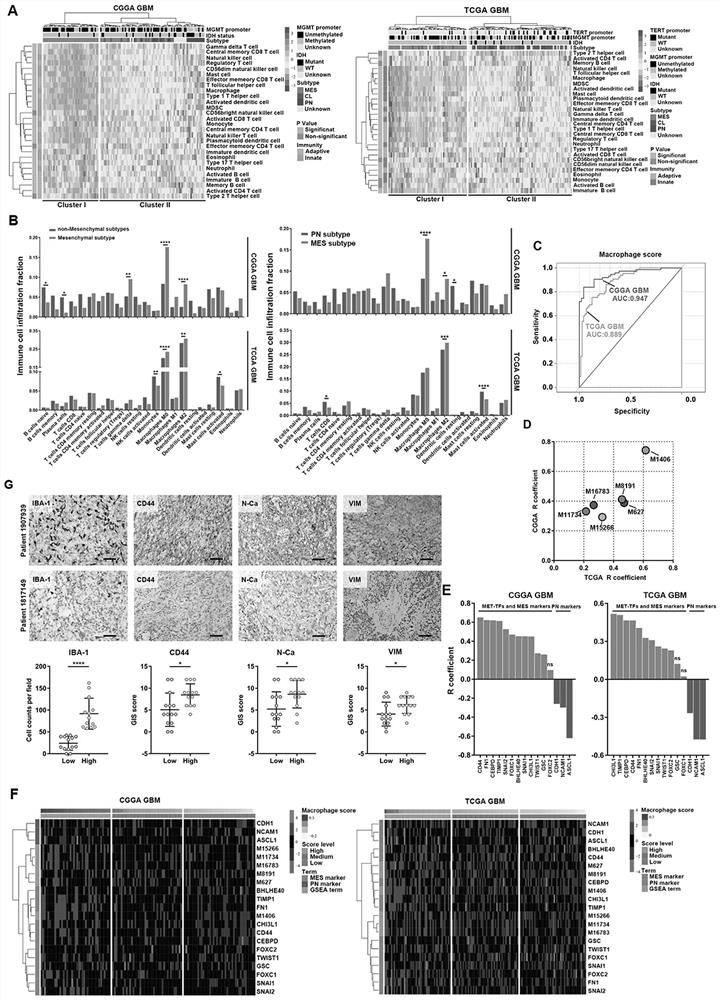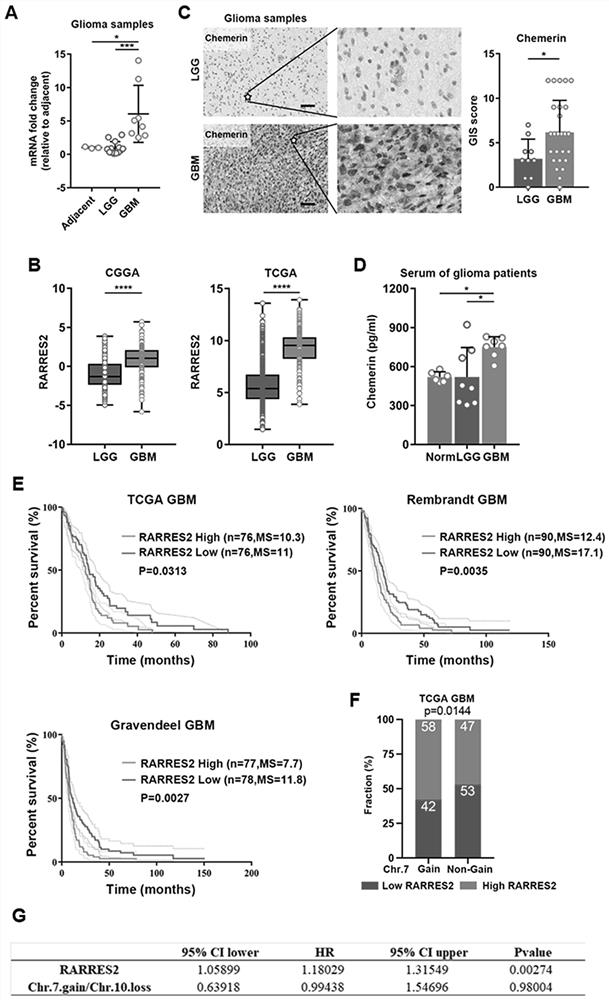Marker of mesenchymal subtype glioblastoma and application thereof
A glioblastoma and marker technology, applied in the field of mesenchymal subtype glioblastoma markers, can solve the problems of unclear and change the progress and outcome of glioma
- Summary
- Abstract
- Description
- Claims
- Application Information
AI Technical Summary
Problems solved by technology
Method used
Image
Examples
Embodiment 1
[0079] Example 1 Tumor-derived chemokines positively regulate the mesenchymal characteristics of GBM.
[0080] To explore the microenvironmental characteristics of different GBM molecular subtypes, we analyzed the transcriptomic data of GBM patients in the CGGA and TCGA databases. Cluster analysis based on immune cell gene set scores showed that the mesenchymal subtype GBM was mainly enriched in Cluster I (chi-square test, pfigure 1 A). By comparing the CIBERSORT immune cell enrichment scores between mesenchymal subtypes and other non-mesenchymal subtypes of GBM, we found that the most significantly enriched immune cell species in mesenchymal subtypes of GBM were M0 or M2 type TAMs ( figure 1 B). Moreover, the macrophage gene set GSVA score was correlated with judging whether the GBM tissue was a mesenchymal subtype ( figure 1 C), the ssGSEA score of the mesenchymal signature gene set ( figure 1 D; Table 1), the expression levels of mesenchymal phenotype-related transcript...
Embodiment 2
[0090] Example 2 Chemokines enhance the mesenchymal characteristics of GBM cells through autocrine pathways
[0091] In order to elucidate the role of chemokines in regulating the mesenchymal characteristics of GBM cells, we used GSCs cells stimulated by TNF-α, a proven enhancer of mesenchymal characteristics of GBM cells, as a positive control, and the GSCs cells were subjected to 48h chemotaxis. After stimulation with recombinant proteins, they were subjected to RNA sequencing. The results showed that GSCs treated with chemokine recombinant protein all had higher Verhaak mesenchymal clustering scores and other mesenchymal characteristic gene set GSVA scores ( Figure 4 A). To further clarify the effect of chemokines on the mesenchymal characteristics of GBM cells, we overexpressed chemokines in GSC1 and GSC28 cells and knocked down chemokines in GSC1 and GSC40 cells ( image 3 F). The results found that similar to the cells treated with TNF-α recombinant protein, overexpr...
Embodiment 3
[0092] Example 3. CMKLR1 plays a key role in GBM cell transduction chemokine signal process
[0093] Previous studies have found that the main receptor that binds to chemokines on the cell surface is CMKLR1. Similar to the RARRES2 expression pattern, CMKLR1 is highly expressed in the mesenchymal subtype GBM ( Figure 5 A). Although CMKLR1 has prognostic value only in the Rembrandt GBM database ( Figure 5 B), but it is the basis for the ability of RARRES2 to exert the prognostic assessment ability of GBM patients. We found that RARRES2 could exert its prognostic value only in the population of GBM patients with high expression of CMKLR1 but not in the population of GBM patients with low expression of CMKLR1 ( Figure 5 C). In addition, patients with high expression of CMKLR1 and RARRES2 had a significantly higher chance of suffering from mesenchymal subtype GBM (Table 4), suggesting a close correlation between chemokine / CMKLR1 expression levels and mesenchymal subtype GBM....
PUM
 Login to View More
Login to View More Abstract
Description
Claims
Application Information
 Login to View More
Login to View More - R&D
- Intellectual Property
- Life Sciences
- Materials
- Tech Scout
- Unparalleled Data Quality
- Higher Quality Content
- 60% Fewer Hallucinations
Browse by: Latest US Patents, China's latest patents, Technical Efficacy Thesaurus, Application Domain, Technology Topic, Popular Technical Reports.
© 2025 PatSnap. All rights reserved.Legal|Privacy policy|Modern Slavery Act Transparency Statement|Sitemap|About US| Contact US: help@patsnap.com



